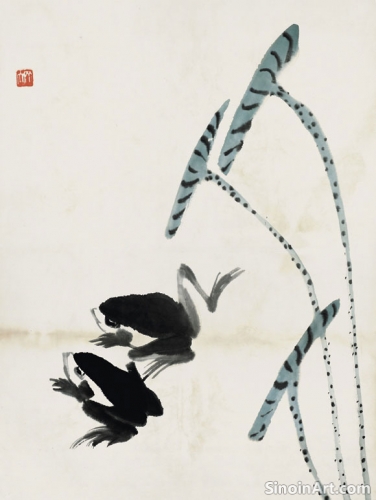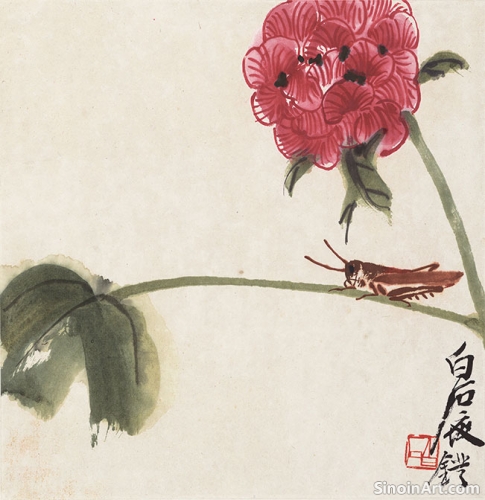The Concept of "Zhong Feng" in Xieyi Brushwork
|
The "Zhong Feng" (中鋒), often translated as "central tip" or "vertical brush," is a fundamental technique in Xieyi brushwork, referring to holding the brush directly perpendicular to the paper, with the tip of the brush moving along the center of the stroke. This creates lines that are strong, full, and have a rounded, balanced quality. This controlled brush position gives the strokes a feeling of power and purpose.  Using zhong feng allows the artist to create lines that are even in width and consistent in tone, requiring a steady hand and a deep understanding of brush control. It requires a precise and practiced hand. Mastering this technique allows the artist to create both smooth lines and broader textures.  This technique is often used to create the foundational lines in Xieyi painting, outlining forms and defining structures, creating a strong and solid base for more expressive brushstrokes. The initial lines must be powerful and full, to provide a strong framework for the rest of the artwork. It offers a foundation for future creative expression.  The "central tip" is also a means of conveying the artist's inner strength, confidence, and control. The feeling of power and strength of line is a highly valued quality in the Xieyi tradition. This power should be applied with intention and clear creative purpose. Mastering the zhong feng technique is an essential step for any aspiring Xieyi painter, providing a foundation for more advanced brushwork and a deep understanding of the art form's principles. It is an essential technique for creating brushstrokes that have both power and beauty. |
Tag : vertical brush, central tip, brush control, Xieyi technique
Related information
- The Use of Ink and Water in Xieyi Technique
- Xieyi Painting and the Expression of Emotion
- Xieyi Painting and the Concept of "Ziran"
- Xieyi Painting and the Concept of "Yi Qian Bi Hou"
- Xieyi Painting and the Expression of Loneliness
The control of ink and water is fundamental to Xieyi painting, allowing for a vast range of tonal values, textures, and expressive effects. Understanding how these elements interact is essential to mastering the techniques.
Xieyi painting is a powerful medium for expressing a wide range of emotions through brushstrokes, ink washes, subject matter, and the artist's state of mind, connecting with viewers on a deeply human and emotional level.
"Ziran" (naturalness) is a cornerstone of Xieyi painting, emphasizing effortless ease, rejection of artificiality, and a profound connection with the natural world, requiring an understanding of materials and authenticity in personal expression, allowing the art process to unfold organically.
"Yi Qian Bi Hou" (intention before the brush) is central to Xieyi, emphasizing the importance of having a clear vision and intention before painting, so that brushstrokes naturally express the artist's inner feelings and ideas, requiring thoughtful preparation, and guiding brushwork with creativity and personal vision.
Xieyi painting powerfully expresses loneliness through suggestive compositions, vast negative space, solitary subjects, muted colors, and a sense of introspection, exploring solitude and the human condition, evoking melancholy and longing, and providing a space for contemplation and self-reflection.